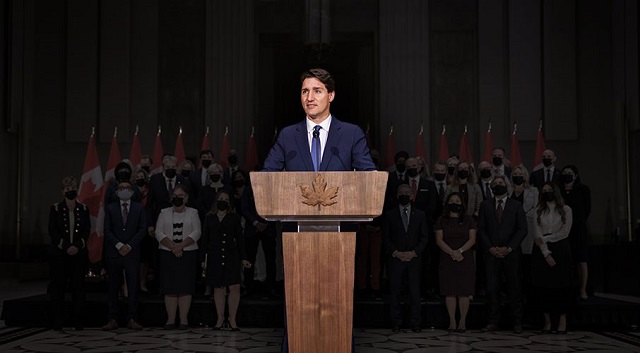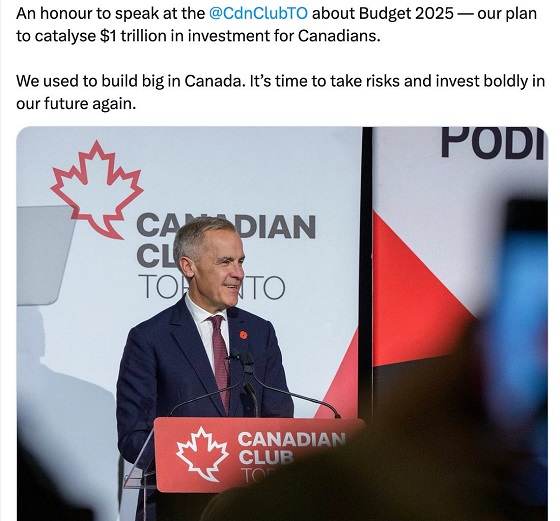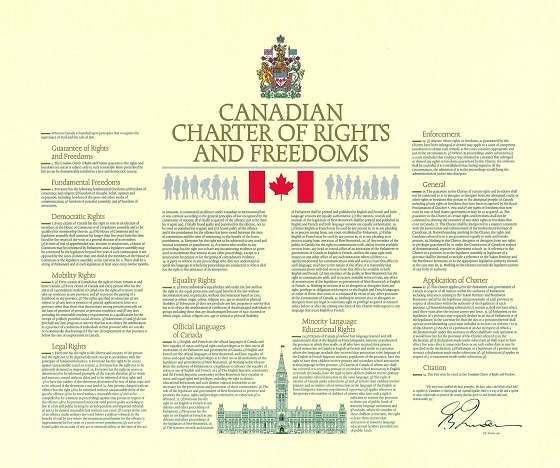Business
Trudeau launches assault on property rights to answer housing shortage

From the MacDonald Laurier Institute
By Aaron Wudrick and Jon Hartley
Liberals crack down on short-term rental owners in fiscal update — while ignoring the need for mass-scale construction of private builds
In Tuesday’s fiscal update, the Trudeau government found itself trying to bury the lede in a bad news story of bigger deficits, higher debt payments and a weakened economy.
Following a slew of opinion polls that show the Liberals trailing the opposition Conservatives by a widening margin, the update also exuded a palpable sense of urgency as the government scrambles to address a critical issue on which they were caught completely off guard: housing.
Housing has emerged, in recent months, as arguably the single biggest political concern in Canada. It impacts middle- and lower-income Canadians most severely and is a significant part of why the Liberals have been bleeding support amongst these key constituencies, which disproportionately include younger Canadians.
In response to their slide in the polls, the Liberals have belatedly started to act on the file — by removing the GST on new rental builds and dedicating $4 billion to a housing accelerator program that aims to incentivize municipalities to remove prohibitive zoning barriers. The fiscal update boasted that this fund has already signed agreements with nine cities to build 21,000 homes over the next three years, which sounds impressive until you consider that Canada needs approximately 3.5 million new homes by 2030 to fix the affordability crisis.
While any new housing supply will be welcome, the measures amount to knee-jerk reactions by a government that tries to solve problems by hastily showering them with money. While the Housing Accelerator Fund correctly focuses on scrapping restrictive zoning, the real goal should be to incentivize the construction of privately built housing on a mass scale, rather than simply subsidize additional public housing. The real cause of Canada’s housing shortage is not market failure but a series of policy failures on multiple fronts and levels.
Perhaps most alarming is the government’s assault on short-term rental housing by reducing tax deductions available to property owners, framed as a crusade against greedy landlords profiting from tourists while everyday Canadians scramble to keep a roof over their heads. The implicit assumption seems to be that, by making short-term rentals less attractive, these units will be magically transformed into long-term rental accommodations (which is wishful thinking, to say the least). In so doing, the government overlooks the diverse array of reasons Canadians choose to rent out properties on a short-term basis.
Flexibility — as facilitated by platforms like Airbnb — is essential for those who do not wish to commit to full-time landlord responsibilities. Additionally, Canadians may have family members who intermittently require housing, such as aging parents or university students. Long-term tenancy, burdened with compliance issues and eviction challenges, is unappealing to many property owners. If the government instead chose to make the work of a landlord more attractive, it wouldn’t need to make short-term rentals less appealing.
Even more troubling is the broader trend of the government encroaching on Canadians’ property rights, ostensibly to compensate for its own housing policy failures. Dictating how citizens use their own property raises serious concerns about the government overstepping its bounds. In a country with well-established property rights, it is inappropriate and misguided for the government to meddle in the choices of families seeking to make ends meet by renting out their properties.
On a practical level, the government’s chosen channels to tackle housing — relying on more government subsidies, undermining the short-term rental market, discouraging institutional investors from buying single-family homes and foreign buyer taxes or bans — will ultimately be too small to meaningfully grow the total stock of housing but will cause a number of harmful unintended consequences.
The bottom line is this: to make any kind of impact on housing affordability at scale, especially for individuals living below the median income, Canada needs a much larger housing supply — and the amount of capital investment this requires can only come from private developers.
All in all, the fiscal update shows the slapdash nature of the Trudeau government’s frantic attempts to address housing concerns, as well as its unfortunate inclination to resort to heavy-handed interventions, particularly in the realm of short-term rentals. The government’s indifference to infringing on private property rights underscores the need for a more supply-oriented approach to housing policy — one that works with, rather than against, the rights of property owners.
Aaron Wudrick is the domestic policy director at the Macdonald-Laurier Institute.
Jon Hartley is a senior fellow at the Macdonald-Laurier Institute and a research fellow at the Foundation for Research on Equal Opportunity.
Business
Will Paramount turn the tide of legacy media and entertainment?


From the Daily Caller News Foundation
The recent leadership changes at Paramount Skydance suggest that the company may finally be ready to correct course after years of ideological drift, cultural activism posing as programming, and a pattern of self-inflicted financial and reputational damage.
Nowhere was this problem more visible than at CBS News, which for years operated as one of the most partisan and combative news organizations. Let’s be honest, CBS was the worst of an already left biased industry that stopped at nothing to censor conservatives. The network seemed committed to the idea that its viewers needed to be guided, corrected, or morally shaped by its editorial decisions.
This culminated in the CBS and 60 Minutes segment with Kamala Harris that was so heavily manipulated and so structurally misleading that it triggered widespread backlash and ultimately forced Paramount to settle a $16 million dispute with Donald Trump. That was not merely a legal or contractual problem. It was an institutional failure that demonstrated the degree to which political advocacy had overtaken journalistic integrity.
Dear Readers:
As a nonprofit, we are dependent on the generosity of our readers.
Please consider making a small donation of any amount here.
Thank you!
For many longtime viewers across the political spectrum, that episode represented a clear breaking point. It became impossible to argue that CBS News was simply leaning left. It was operating with a mission orientation that prioritized shaping narratives rather than reporting truth. As a result, trust collapsed. Many of us who once had long-term professional, commercial, or intellectual ties to Paramount and CBS walked away.
David Ellison’s acquisition of Paramount marks the most consequential change to the studio’s identity in a generation. Ellison is not anchored to the old Hollywood ecosystem where cultural signaling and activist messaging were considered more important than story, audience appeal, or shareholder value.
His professional history in film and strategic business management suggests an approach grounded in commercial performance, audience trust, and brand rebuilding rather than ideological identity. That shift matters because Paramount has spent years creating content and news coverage that seemed designed to provoke or instruct viewers rather than entertain or inform them. It was an approach that drained goodwill, eroded market share, and drove entire segments of the viewing public elsewhere.
The appointment of Bari Weiss as the new chief editor of CBS News is so significant. Weiss has built her reputation on rejecting ideological conformity imposed from either side. She has consistently spoken out against antisemitism and the moral disorientation that emerges when institutions prioritize political messaging over honesty.
Her brand centers on the belief that journalism should clarify rather than obscure. During President Trump’s recent 60 Minutes interview, he praised Weiss as a “great person” and credited her with helping restore integrity and editorial seriousness inside CBS. That moment signaled something important. Paramount is no longer simply rearranging executives. It is rethinking identity.
The appointment of Makan Delrahim as Chief Legal Officer was an early indicator. Delrahim’s background at the Department of Justice, where he led antitrust enforcement, signals seriousness about governance, compliance, and restoring institutional discipline.
But the deeper and more meaningful shift is occurring at the ownership and editorial levels, where the most politically charged parts of Paramount’s portfolio may finally be shedding the habits that alienated millions of viewers.The transformation will not be immediate. Institutions develop habits, internal cultures, and incentive structures that resist correction. There will be internal opposition, particularly from staff and producers who benefited from the ideological culture that defined CBS News in recent years.
There will be critics in Hollywood who see any shift toward balance as a threat to their influence. And there will be outside voices who will insist that any move away from their preferred political posture is regression.
But genuine reform never begins with instant consensus. It begins with leadership willing to be clear about the mission.
Paramount has the opportunity to reclaim what once made it extraordinary. Not as a symbol. Not as a message distribution vehicle. But as a studio that understands that good storytelling and credible reporting are not partisan aims. They are universal aims. Entertainment succeeds when it connects with audiences rather than instructing them. Journalism succeeds when it pursues truth rather than victory.
In an era when audiences have more viewing choices than at any time in history, trust is an economic asset. Viewers are sophisticated. They recognize when they are being lectured rather than engaged. They know when editorial goals are political rather than informational. And they are willing to reward any institution that treats them with respect.
There is now reason to believe Paramount understands this. The leadership is changing. The tone is changing. The incentives are being reassessed.
It is not the final outcome. But it is a real beginning. As the great Winston Churchill once said; “Now this is not the end. It is not even the beginning of the end. But it is, perhaps, the end of the beginning”.
For the first time in a long time, the door to cultural realignment in legacy media is open. And Paramount is standing at the threshold and has the capability to become a market leader once again. If Paramount acts, the industry will follow.
Bill Flaig and Tom Carter are the Co-Founders of The American Conservatives Values ETF, Ticker Symbol ACVF traded on the New York Stock Exchange. Ticker Symbol ACVF
Learn more at www.InvestConservative.com
Business
Carney’s Floor-Crossing Campaign. A Media-Staged Bid for Majority Rule That Erodes Democracy While Beijing Hovers

In a majority government, an unprecedented and risky, course-altering national policy — deepening ties with Beijing while loosening ties with Washington — is considerably easier to execute.
On budget day, Ottawa’s reporters were sequestered in the traditional lock-up, combing through hundreds of pages, when Politico detonated a perfectly timed scoop: Conservative MP Chris d’Entremont was weighing a jump to Mark Carney’s Liberals. Within hours, he crossed, moving the government to within two seats of a majority — one that would guarantee Carney’s hold on power until 2029 — without Canadians casting a single ballot.
This was no ordinary budget day. By orchestrating a floor-crossing during a media lock-up, the Liberals blurred scrutiny of a historic spending plan while inching toward a de facto majority. That sequence raises deeper concerns about media–political entanglements and the democratic legitimacy of building a majority outside the polls.
Toronto Sun columnist Brian Lilley, in a deeply reported Substack post yesterday, captured months of palace intrigue. A well-sourced politics reporter with lines into Conservatives and Liberals alike, he lays out the knowns, the known unknowns, and the plausible backroom plays. Carney’s courting began right after the April 28 election that left him sitting at 169 seats, Lilley writes. For weeks, the Liberals probed for weak ribs in the Conservative caucus; and on November 4, they landed one.
“One thing is clear, the Liberals have been trying to poach a lot of Conservative MPs and doing everything they can to convince them to cross the floor,” he concluded.
Why? According to Lilley, Carney has been “governing for the most part like he has a majority, and he clearly doesn’t want to engage in the horse trading that a minority Parliament requires, so poaching MPs can solve his problem.”
The fallout was already clear to see last week. And it doesn’t look good for Canadian democracy or Canadian media, which receives significant government subsidies. Even at surface level, the press corps was visibly distracted from its first duty to citizens: scrutinizing a historically large budget packed with nation-building promises and unanswered questions about feasibility. Veteran reporters have already acknowledged this.
In another piece this weekend, Catherine Tunney, a solid CBC reporter, explained how Pierre Poilievre was undermined this way: “For the Opposition, budget week is a communications gift. It’s an easy way for the party to call out government spending,” she wrote. “For a leader who has built his brand on calling out Liberal spending, tabling a budget with a $78-billion deficit is the political equivalent of pitching a strike straight down the middle to Dodger slugger Shohei Ohtani.”
But instead, “of taking a victory lap around the bases, [Poilievre] ended the week facing questions about his leadership — after losing one MP to his rivals and another resigning from federal politics altogether.”
The messaging continued yesterday, with another CBC report amplifying the Liberals’ narrative that Conservative leaders were actively bullying MPs not to cross.
CBC had to issue a correction. After publishing d’Entremont’s account that senior Conservatives “pushed” his assistant, CBC later updated the story to clarify that Andrew Scheer and Chris Warkentin “pushed open the door,” and the aide stepped aside — a meaningful distinction.
Stepping back from the noise, there is a deeper problem.
Making honeyed promises to floor-crossers is legal in Canada’s democracy. But Canada is in a mounting trade war involving China and the United States, in an increasingly dangerous, cutthroat geopolitical environment. Already, the prime minister is pledging renewed engagement with Beijing as a strategic partner.
Doing so in a minority Parliament means facing tough accountability questions — and bruising inquiries in ethics committee hearings. In a majority government, an unprecedented and risky, course-altering national policy — deepening ties with Beijing while loosening ties with Washington — is considerably easier to execute.
And what kind of partner is Carney choosing? Yesterday, Japan lodged formal complaints after a senior Chinese diplomat took to social media and threatened to “cut [the] dirty neck” of Japan’s new leader over her stance on Taiwan. On Friday, Prime Minister Sanae Takaichi had said a Chinese attack on Taiwan could constitute “a survival-threatening situation” for Japan, potentially requiring the use of force.
“We have no choice but cut off that dirty neck that has been lunged at us without hesitation. Are you ready?” Chinese Consul General Xue Jian said in a message posted on X, which was later deleted.
This is the government Carney is rapidly sliding closer to. The same regime that jailed Canadians Michael Kovrig and Michael Spavor in the Meng Wanzhou affair — and a government that, Canadian intelligence has warned, attempts to shape media narratives in Canada.
As The Bureau reported in 2023, Canada’s own Privy Council Office warned in a January 2022 Special Report that Beijing’s United Front Work Department targets Canadian institutions.
In a section alleging Beijing “manipulates traditional media” in Canada, the report details press conferences held in January 2019 by former Toronto-area Liberal cabinet minister John McCallum, to argue that Canada’s detention of Huawei executive Meng Wanzhou was illegal. McCallum, then ambassador to China, was forced to resign after the Conservative opposition condemned his comments.
In the fallout, according to the Privy Council Office report, Canadian intelligence uncovered that several Chinese diplomats in Canada were voicing support for McCallum. One Chinese consulate official “sent information” to an unidentified Canadian media reporter indicating Chinese Canadians have favourable impressions of McCallum, the report says.
Now back to Ottawa media’s role. Why and how did Politico get the floor-crossing scoop during the budget lock-up — and then, that same evening, co-host a post-budget reception branded “Prudence & Prosecco” at the Métropolitain Brasserie, where Finance Minister François-Philippe Champagne and well-placed Liberals mingled with reporters? Every veteran reporter knows political parties try to influence the press — they’re called spin doctors for a reason. But darker forces can ride the same channels. In Brussels, for example, European security services are investigating a former Politico reporter over alleged ties to Chinese intelligence — still unproven, but a cautionary tale about the murkiness of media–political ecosystems.
Lilley also documents how coverage of another rumoured floor-crosser, Matt Jeneroux, became part of last week’s fog machine. The Toronto Star reported a private meeting between Jeneroux and Carney involving senior Liberal strategists Braden Caley and Tom Pitfield; Jeneroux issued categorical denials to senior Conservatives. “Someone is lying,” Lilley writes — and whether or not a second crossing was imminent, the destabilization served its purpose. Other names floated, such as Michael Chong, were so implausible as to raise suspicion of calculated disinformation.
“I didn’t buy Chong either, but Liberals kept pushing that narrative,” Lilley wrote. “As someone who knows Michael a bit, I simply didn’t believe it, didn’t even reach out to ask — he later called me to confirm the rumours were bogus.”
It is geopolitically notable that Michael Chong — sanctioned by Beijing and repeatedly targeted in PRC pressure campaigns, including a Chinese intelligence operation targeting Chong and his family that Justin Trudeau’s government failed to notify him about — saw his name tossed into this mess. Who benefits from saddling Chong with corrosive rumours?
It would seem that not only the Liberals benefit, but so do Carney’s new “strategic partners” in Beijing. None of this proves any newsroom has wittingly acted in bad faith, nor is there any evidence that Beijing’s shadow looms in the Liberals’ media playbook. But it does suggest how a coordinated political operation can be abetted by domestic media distraction.
Now, consider darker possibilities that could be in play. Not necessarily last week, but in any number of major events and stories shaping relations among Canada, China, and the United States.
The bipartisan NSICOP 2024 Review into allegations of Chinese election interference in Canada’s last two federal elections found that “during the period under review, the intelligence community observed states manipulating traditional media to disseminate propaganda in what otherwise appeared to be independent news publications.”
It added: “Foreign states also spread disinformation to promote their agendas and consequently challenge Canadian interests, which posed the greatest cyber-threat activity to voters during the time under review.”
The report continued: “These tactics attempt to influence public discourse and policymakers’ choices, compromise the reputations of politicians, delegitimize democracy, or exacerbate existing frictions in society.”
According to the intelligence community, “the PRC was the most capable actor in this context, interfering with Canadian media content via direct engagement with Canadian media executives and journalists.”
So what do we have here? Carney’s Liberals have a natural interest in destabilizing the Conservatives and sending Pierre Poilievre — a prosecutorial-style politician who excels at exposing his opponents’ weaknesses — into early political retirement. Arguably, they have a well-founded interest in dividing the Conservative Party itself.
But using the media to float names of opposition MPs who never intended to cross is disinformation, plain and simple. And when that name is Michael Chong — long targeted by Beijing — the stakes rise. If Carney is tilting toward a “strategic partnership” with Beijing, and if that delays the Foreign Influence Transparency Registry, as critics such as Dr. Charles Burton warn, then the tactics on display have moved from questionable to unacceptable — and risk entangling the interests of the Liberal Party of Canada with those of the Chinese Communist Party in Beijing.
The Bureau is a reader-supported publication. To receive new posts and support my work, consider becoming a free or paid subscriber.
-

 Agriculture1 day ago
Agriculture1 day agoBovaer Backlash Update: Danish Farmers Get Green Light to Opt Out as UK Arla Trial Abruptly Ends!
-

 Alberta1 day ago
Alberta1 day agoSchool defunding petition in Alberta is a warning to parents
-

 International1 day ago
International1 day agoBBC boss quits amid scandal over edited Trump footage
-

 Daily Caller1 day ago
Daily Caller1 day agoMcKinsey outlook for 2025 sharply adjusts prior projections, predicting fossil fuels will dominate well after 2050
-

 Agriculture24 hours ago
Agriculture24 hours agoFarmers Take The Hit While Biofuel Companies Cash In
-

 Business14 hours ago
Business14 hours agoCarney’s Floor-Crossing Campaign. A Media-Staged Bid for Majority Rule That Erodes Democracy While Beijing Hovers
-

 Frontier Centre for Public Policy1 day ago
Frontier Centre for Public Policy1 day agoNotwithstanding Clause Is Democracy’s Last Line Of Defence
-

 COVID-192 days ago
COVID-192 days agoMajor new studies link COVID shots to kidney disease, respiratory problems








